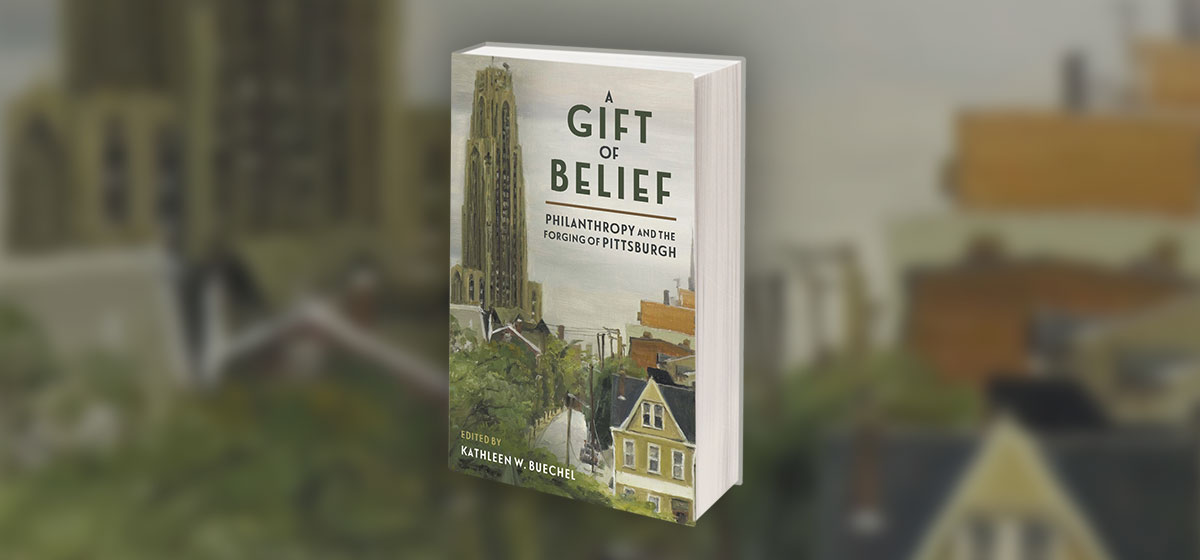
Ask a person from Pittsburgh to define philanthropy and they’ll most likely mention an industrialist such as Andrew Carnegie, or a patriarch named Heinz or Mellon. These economic titans loom large in Pittsburgh. The word “Pittsburgh” and its Gilded Age bequests are so intertwined that some think these industrialists invented philanthropy here. Experiences at Carnegie’s libraries, Phipps’s conservatory, Buhl’s planetarium or Frick’s public park indeed unlocked a wider world for many. They also contributed to a singular, narrower impression of philanthropy’s origin story here.
In fact, ultra-wealthy capitalists did not invent philanthropy in Pittsburgh. Rather, they joined an existing tradition of countless individuals, congregations and whole communities who contributed their often far more precious, personal resources. These diverse, less visible donors preceded the titans and continued on after them. Women, African Americans, immigrants and religious groups from every neighborhood and social strata forged critical forms of philanthropy here.
The two images of commercial titans making big civic bets and organized neighbors helping neighbors in need rarely meet in one portrait. Yet their blending represents Pittsburgh’s truer philanthropic story. In A Gift of Belief: Philanthropy and the Forging of Pittsburgh, a new book I edited, 12 authors weave together these often-disconnected narratives. Their analysis reveals philanthropy as a more widespread and defining part of Pittsburgh’s civic culture from the mid-19th century into the present.
Who and what did these authors find? They found philanthropists who fitted their means to the needs and circumstances of their time. These donors, too, established important institutions such as schools, orphanages and settlement houses. Their generosity met pressing needs as Pittsburgh reeled from frequent epidemics, economic downturns and the effects of rapid industrialization and urban change. Their contributions were as equally consequential as those of their more prominent peers. And they have been underreported in our region — until now.
Women figured prominently in Pittsburgh’s early philanthropy. In 1796, women from the First Presbyterian Church established the Relief Society for the Poor during a cholera epidemic. Two women named Jane Holmes, cousins with the same name, supported a host of charitable institutions. Women’s roles in society evolved through philanthropy. They gave, owned and managed charitable property. They moved from relief givers to institution builders and later, they endowed and led local foundations.
Building on the strength of churches, the ethos of self-help and the necessity of mutual aid in the face of racism, philanthropy flourished in Pittsburgh’s African American community. Women’s service clubs, congregations and individuals such as Daisy Lampkin, Alma Illery, Bernard Jones and others marshalled philanthropy in their communities, forming a grassroots safety net. Both African Americans and women gained agency through their philanthropy before they could vote.
As the 20th century dawned, philanthropists shifted their methods from sectarian to more secular, scientific approaches. Pittsburgh came later to some of these philanthropic ideas, resisting the drive to federate charities long after other regions. In other moments, philanthropists here were ahead of the curve, adapting systems and scientific means to a host of issues. They funded parks, medical breakthroughs and the Cultural District Downtown. Later, they supported the transition from steel toward a knowledge-based economy. They partnered with government and, within legal bounds, sought to change it, too.
This is a distinctively Pittsburgh story. Despite differences, these philanthropists shared a willingness to give to help Pittsburgh and its people. They believed in the power of giving and organized their philanthropy accordingly. They took risks. They didn’t always get things right. The chapters of A Gift of Belief reveal both the successes of philanthropists and where they fell short. Many of the challenges that nettled 19th century philanthropists persist here today. A more expansive and nuanced view of the region’s philanthropy enables us to learn from and build on the past. Philanthropy, and its promise for Pittsburgh, remains a work in progress





